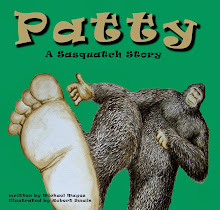
In an article by Malin Rising published today by the Associated Press, and posted on the Yahoo! News website, startling information on the intelligence of a chimpanzee named Santino is documented. The observed behaviors of this particular chimpanzee seem to prove that apes are very much aware of the future and can plan ahead for it just like humans can. You can access the article here.
According to a report in the journal Current Biology, Santino collected a stash of rocks during periods of calm, stowed them away until the time was right, and then hurled them at unsuspecting zoo visitors who gawked at him. Santino even went so far as to probe the artificial concrete “boulders” in his enclosure seeking weak spots. Once located, the chimp knocked off chunks of the material to add to his weapons cache. Even more impressive is that Santino did all of his collecting in the morning hours before the zoo opened and waited until midday before raining down his collection upon zoo patrons.
The author of the study, Mathias Osvath, a Ph.D. candidate at Lund University, said, “These observations convincingly show that our fellow apes do consider the future in a very complex way.” Osvath also stated, “It implies that they have a highly developed consciousness, including lifelike mental simulations of potential events.” Osvath based his findings on not only his own observations, but those of three zoo caretakers who followed the chimp’s behavior for 10 years at the Furuvik zoo. He added, “It is very special that he first realizes that he can make these (throwing sized projectiles) and then plans on how to use them. This is more complex than what has been shown before. The fact that the ape stayed calm while preparing his weapons but used them when he was extremely agitated proves that the planning behavior was not based on an immediate emotional drive.”
Joseph Call, author of a 2006 study of orangutan and bonobo behaviors conducted at the Max Planck Institute for Evolutionary Anthropology in Leipzig, Germany, did say that it is unclear as to how typical this level of intelligence might be in chimpanzees as a species. “It could be that he is a genius, only more research will tell.” He did add, “On the other hand, our research showed the same (awareness of the future and ability to plan ahead) in orangutans and bonobos. So, he is not alone.”
The connection to sasquatch research is fairly obvious. There have been many reports of sasquatches throwing sticks or rocks at witnesses. This is a behavior that was scoffed at once by the scientific community as a whole as being too fantastic to be believable. Now, this exact behavior has been observed many times in several different species of great apes. Suddenly, the accounts of witnesses having rocks rained down upon them, their cabins, tents, or vehicles seem much more plausible.
Of even more interest to me, however, is the notion that great apes seem to have an understanding of how possible future events may play out and, therefore, make contingency plans for them. Could it be that hikers, campers, and fishermen who have had rocks rain down on them stumbled too close to the actual nest or breeding area of a sasquatch? Perhaps these types of reports should be examined more closely than a typical, if there is such a thing, sighting report. Based on the behaviors observed in Santino the chimpanzee, it may not be so far fetched to think it possible that a sasquatch might stash rocks or limbs in several locations around it’s true home to be used in the event an intruder wanders just a bit too close. I would contend that researchers might want to zero in on locations where rock or stick throwing incidents have allegedly occurred. These incidents just might shed light on areas that sasquatches feel strongly about. By far the most commonly reported response of sasquatches to human interlopers is simply to walk away. The stick or rock throwing is a very different, and much more aggressive, behavior. What could elicit such a, seemingly, atypical response? Maybe, just maybe, it is that the intruder is too close to the animal’s home, young, or main food source. If true, these are the areas that might need to be monitored closely over long periods of time. After all, a rock or stick bouncing off the old noggin would be a small price to pay for the “discovery of the century”.












No comments:
Post a Comment